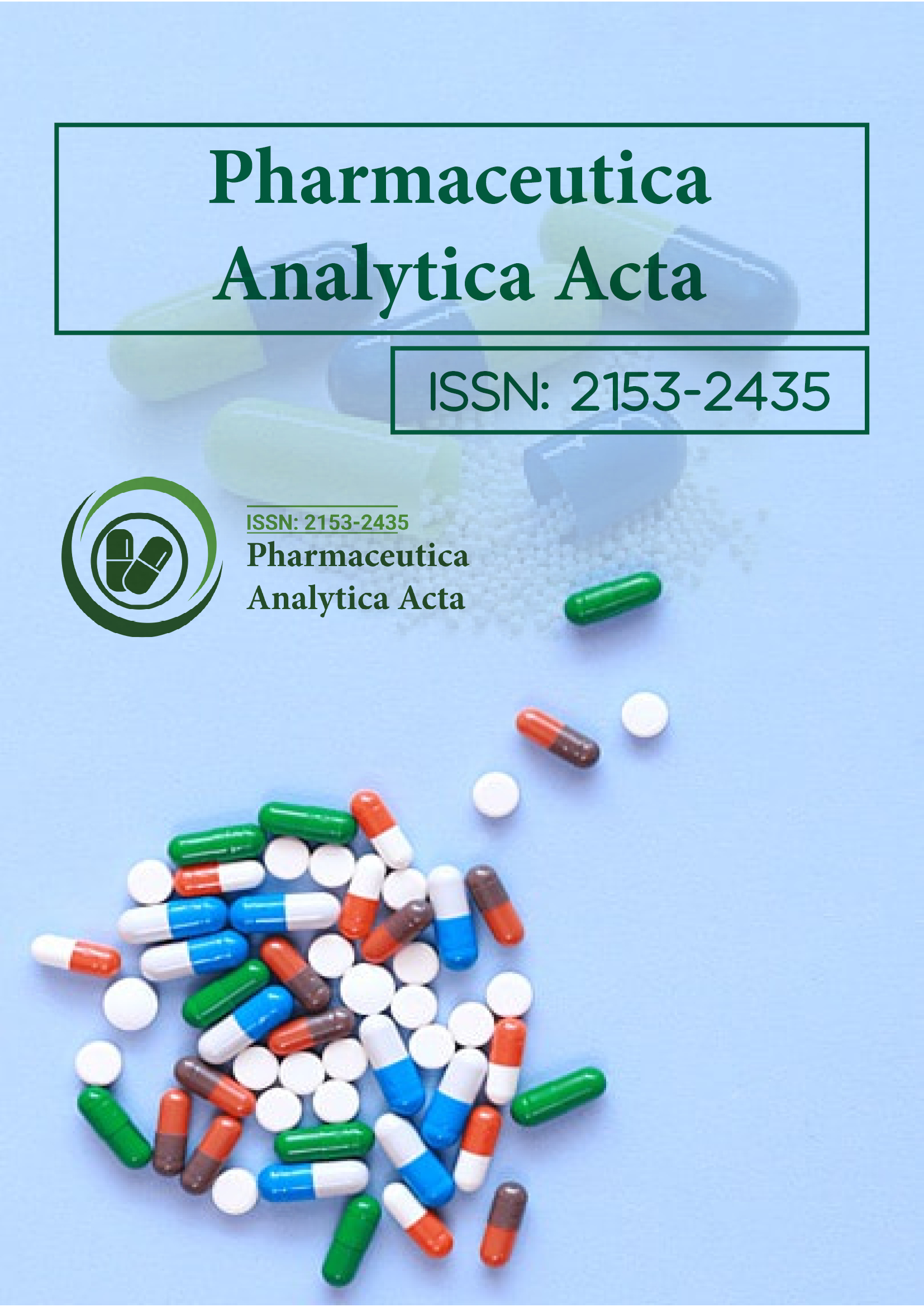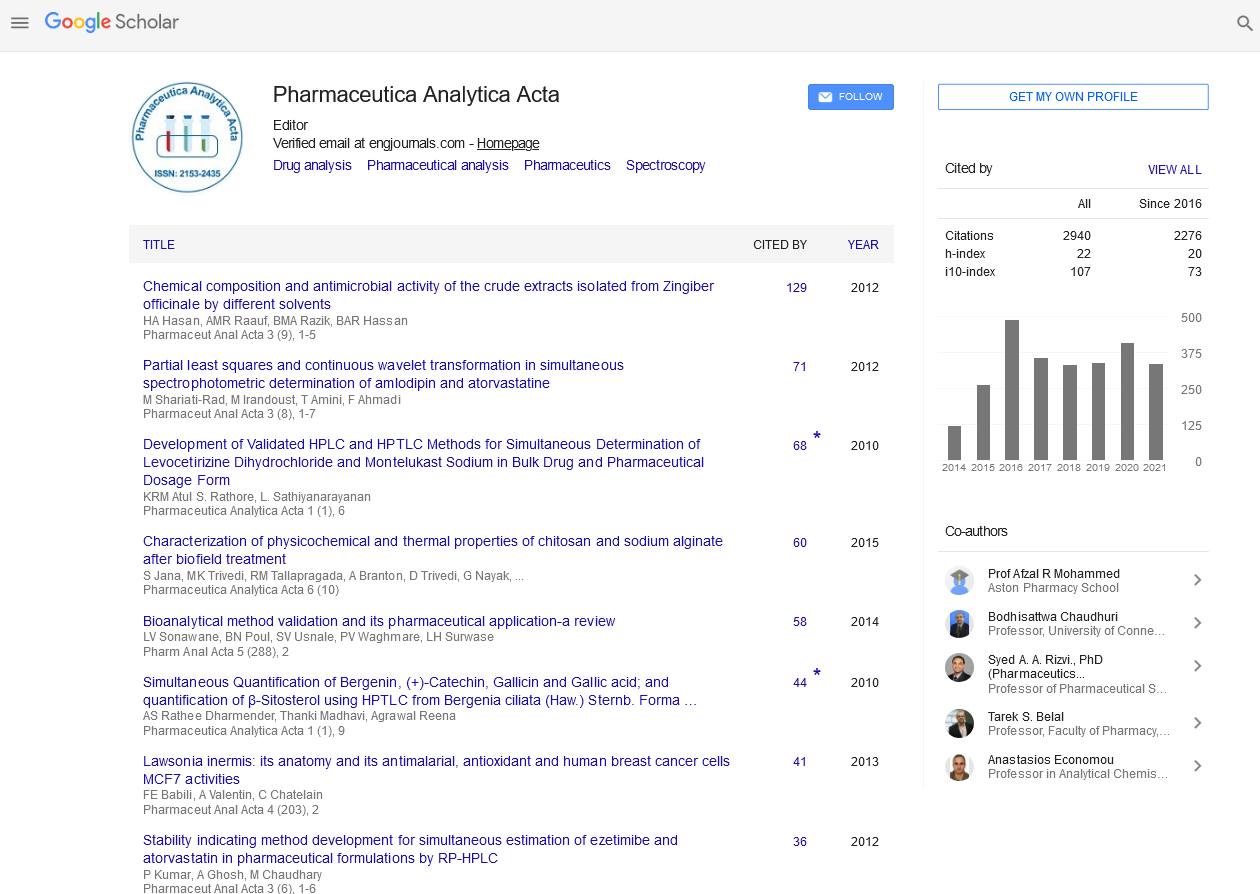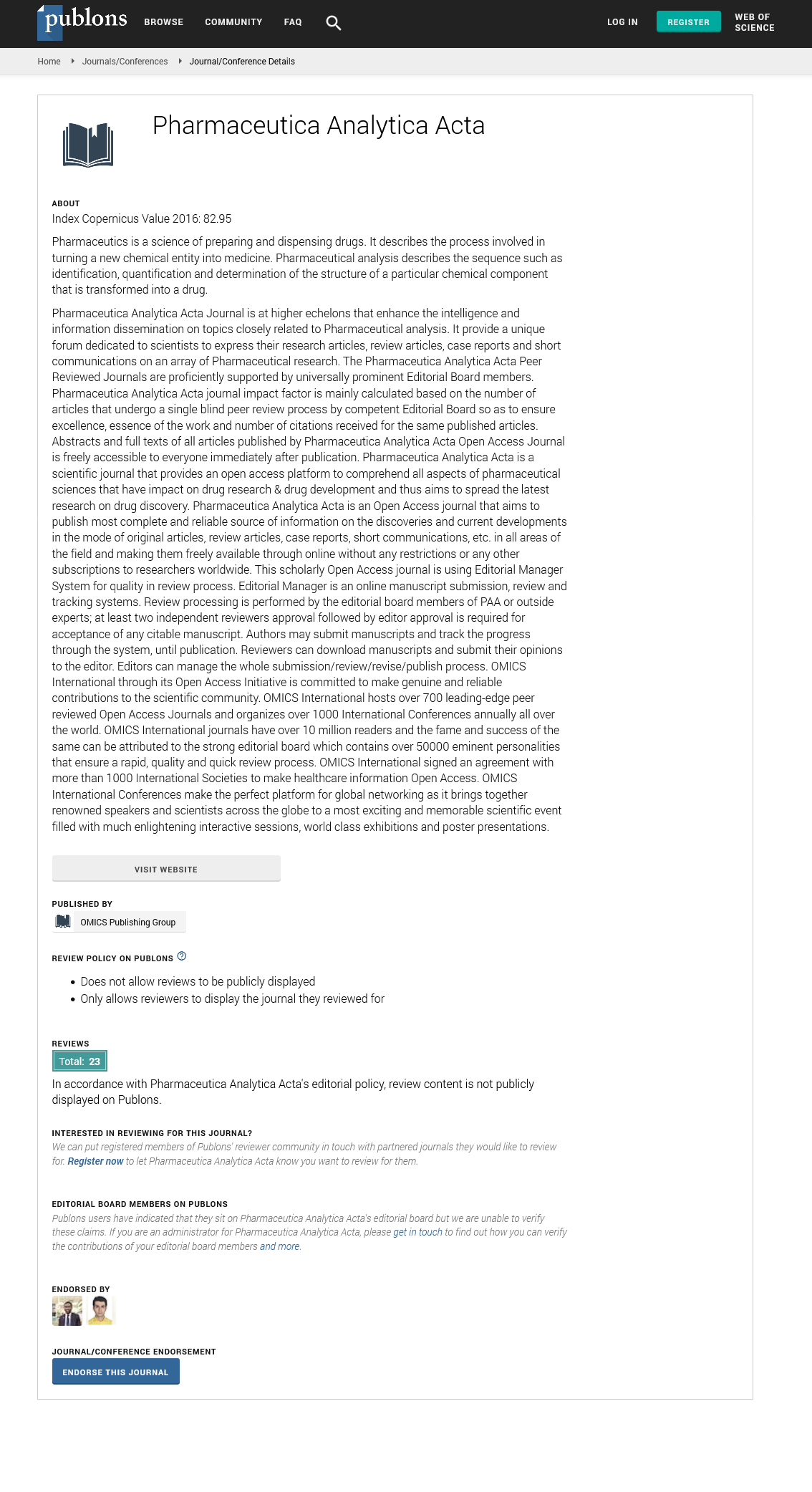Indexed In
- Open J Gate
- Genamics JournalSeek
- Academic Keys
- JournalTOCs
- The Global Impact Factor (GIF)
- China National Knowledge Infrastructure (CNKI)
- Ulrich's Periodicals Directory
- RefSeek
- Hamdard University
- EBSCO A-Z
- OCLC- WorldCat
- Publons
- Geneva Foundation for Medical Education and Research
- Euro Pub
- Google Scholar
Useful Links
Share This Page
Journal Flyer

Open Access Journals
- Agri and Aquaculture
- Biochemistry
- Bioinformatics & Systems Biology
- Business & Management
- Chemistry
- Clinical Sciences
- Engineering
- Food & Nutrition
- General Science
- Genetics & Molecular Biology
- Immunology & Microbiology
- Medical Sciences
- Neuroscience & Psychology
- Nursing & Health Care
- Pharmaceutical Sciences
Abstract
New Sensitizers Developed on a Methylpheophorbide a Platform for Photodynamic Therapy: Synthesis, Singlet Oxygen Generation and Modeling of Passive Membrane Transport
Kustov AV, Belykh DV, Startseva OM, Kruchin SO, Venediktov EA and Berezin DB
This study focuses on the behavior of new potential sensitizers for photodynamic therapy of cancer developed on a chlorophyll a platform. Pheophorbide a 17-(3) methylester and its two glycol derivatives have been synthesized from chlorophyll and identified via visible, UV-, NMR- and MS-spectra. The behavior of photosensitizers in solutions has been studied with various experimental techniques. They are found to generate singlet oxygen with a sufficient quantum yield and reveal a tendency to effectively penetrate into cell membranes due to high lipophilicity. Thermodynamic analysis indicates that the sensitizer transfer from a water-like to a lipid-like medium is controlled by a large and negative enthalpic term excepting the case of the most polar solute, where for phosphate saline buffer the favorable entropic term dominates. Our study highlights the important feature dealing with the temperature dependence of partition coefficients between saline buffer and 1-octanol which is found to be surprisingly strong for hydrophobic solutes and temperature independent for the species containing both H-donor and H-acceptor groups.


